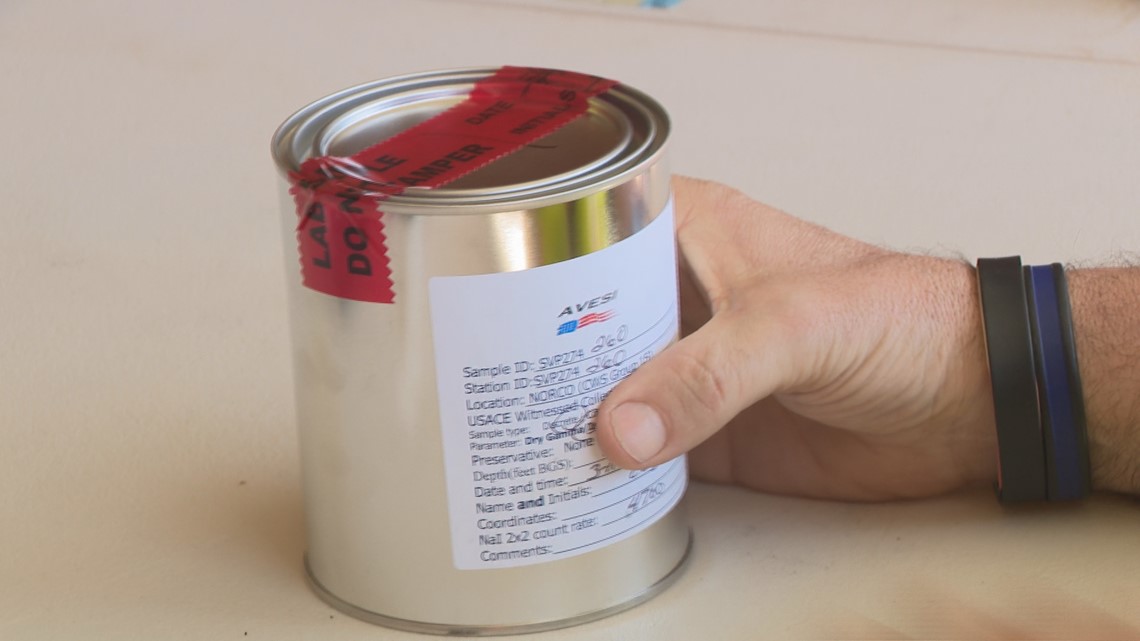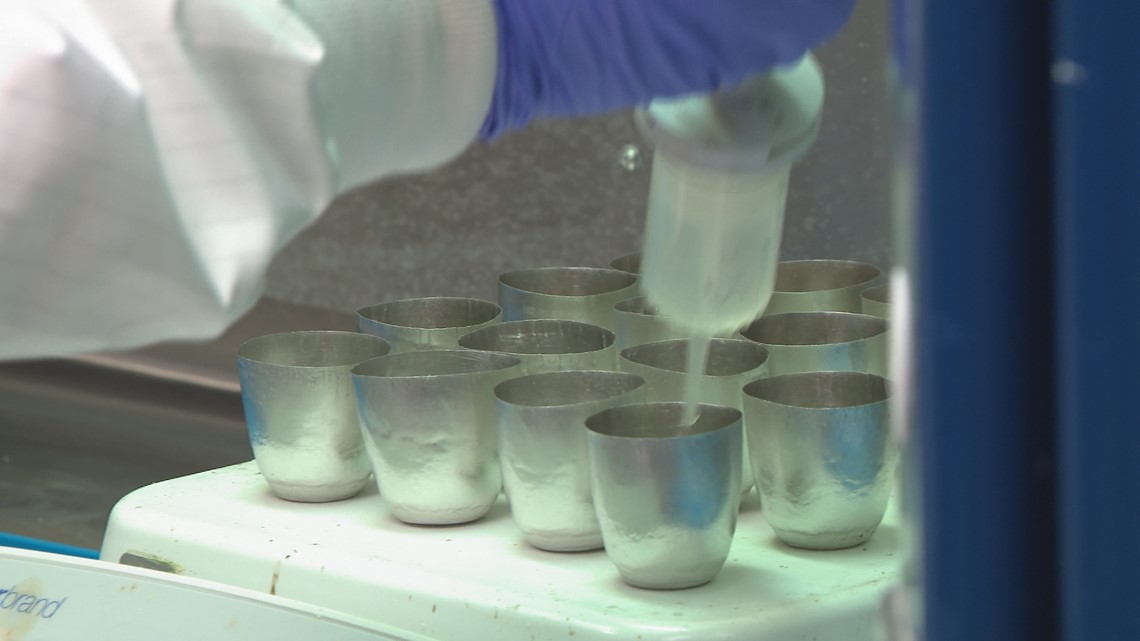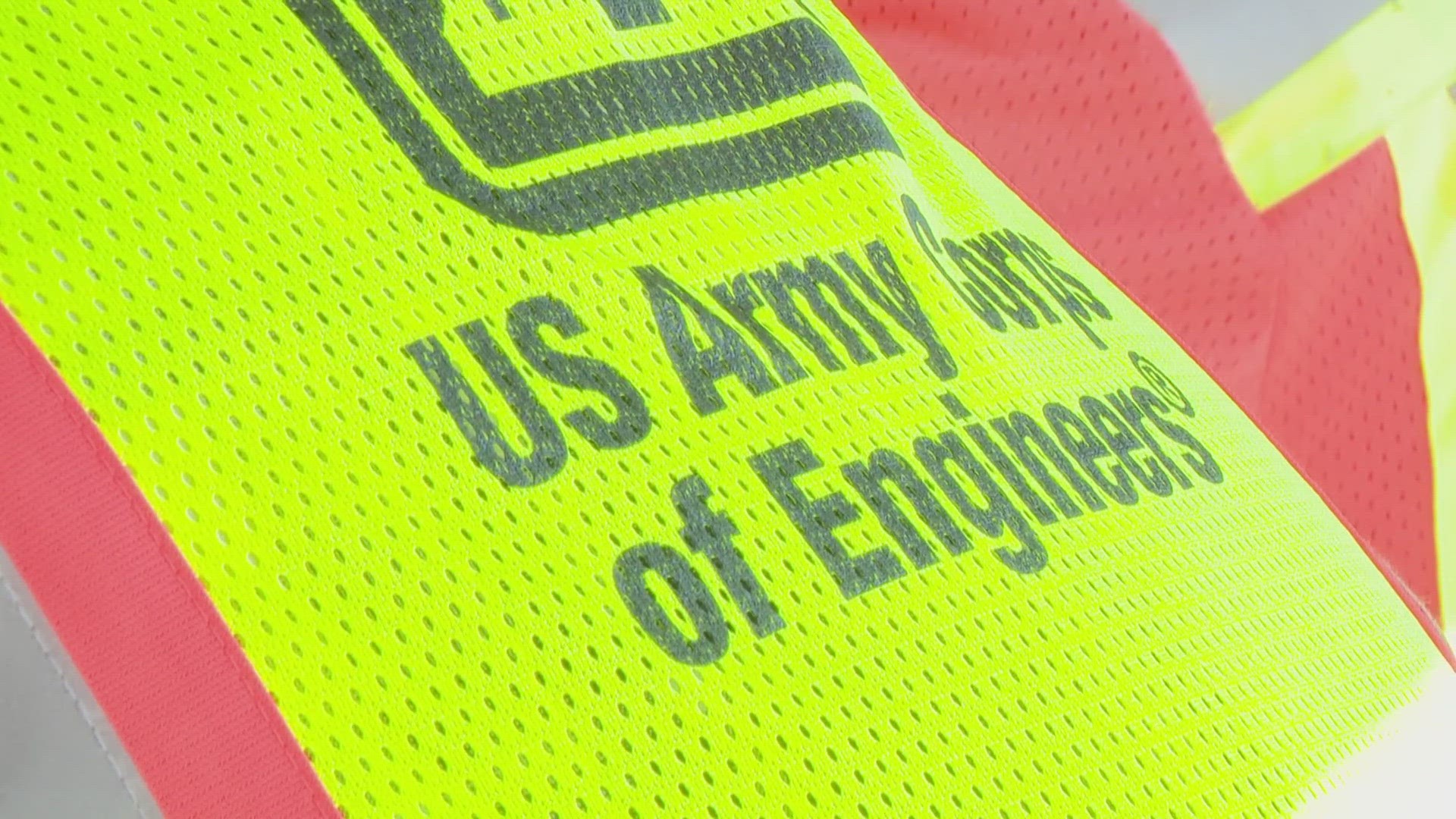FLORISSANT, Mo. — The U.S. Army Corps of Engineers is sampling its third house this week in the Cades Cove subdivision in Florissant, along Coldwater Creek.
Under the Formerly Utilized Sites Remedial Action Program (FUSRAP), the U.S. Army Corps of Engineers (USACE) is cleaning sites with contamination from the nation’s early atomic energy program. Coldwater Creek was contaminated by radioactive material from the first atomic bomb, after improper storage of the material.
FUSRAP's Senior Lead Engineer Robin Parks has been with the USACE for 32 years and specifically with FUSRAP since 1998-1999.
Parks said the agency has been sampling and investigating in and around the 14-mile Coldwater Creek since 2014.
Parks explained the very first samples adjacent to the Cades Cove subdivision were in 2016 and then some of the yards had sampling events later in 2018.
Since then, FUSRAP have done delineation attempts over the last few years, in which they grab additional samples more in depth.
"By the time you get to the field, that equates to months, not days or weeks," he added.
The U.S. Army Corps of Engineers detected radioactive contamination in the backyards of six homes.
And this year marks something new.
"This is the first time that we’ve had any reason at all to be inside a home, to either test the home itself, which we aren’t doing here. There is no indication of testing in the home, we are doing some swipes inside the home because we are here but there is no reason to suspect contamination on or inside the house. This is the first time we’ve had to go underneath a structure to a home," Parks added.


The contractors have created four-inch holes in the basement and contractors are going down 10 to 14 feet below the basement.
Some homes have five holes drilled in. The contractors will repair the hole and seal it with a concrete finished cap.
"We don't have any indication yet that it's under the home but we know it's close enough that we need the data for what's under the home. Right now the contamination is not posing a health risk at all, it's at depth anywhere from 10 to 14 feet below the service, there is no exposure radioactivity happening," Parks shared.


The agency is testing downstream of the contaminated Coldwater Creek, and since this involves a residential area, the Cades Cove homes are at the top of the list.
Parks said the homes are built on an old creek meander.
"The reason that this contamination is in the backyards and getting close to the homes is there was a historic creek meander that went through this area. When the subdivision was built, fill was brought in and put on top of that creek meander and the homes were put on top. Previous floods flooded into that historic meander, which was a low spot, and that’s where contaminated sediments settled in and that’s the exact reason why the locations are where they are," Parks explained.
Parks said contractors have recently sampled three homes to find the extent of possible contamination. The agency is working to get a fourth home tested.
Since this is inside a residential home, Parks explained the agency has more workers on site to make sure the integrity of the samples stays intact.


"We have someone that is inside while they take the samples, the soil is brought up into bags, those bags are sealed and put into a container," Parks shared. "Samples go to the lab, lab results take a few weeks then the data is analyzed and put in a document for reports."
On the FUSRAP site near the St. Louis Lambert International Airport, which is about 10 minutes from Cades Cove, is the lab.
A representative said it would take six and a half hours for 13 samples to get tested. Samples go through a prep phase, then to chemical separation, then to its final phase of analysis.


Once results come in, the agency decides if it needs to re-sample and then create a design to excavate the area.
Parks said this can be a long process.
The timeline for one area can range from six months to a couple of years.
"As results come in, we communicate with homeowners. We are talking about both extremes: no failures to failures under the home and what it’s going to mean. We are here to finish the job. We are invested, we care and do what we can to instill trust in the residents," Parks said.
What's next
The Cades Cove project from sampling to excavating can take one year.
Parks said their next project is working on McDonnell Bridge. The bridge is expected to be closed and demolished soon. The goal is to do remediation in the creek and creek banks, specifically on the east and west sides.
The public information manager with the St. Louis County Transportation and Public Works said this project has been delayed a few times and will notify 5 On Your Side when the project will begin.
USACE FUSRAP is still planning a community meeting for nearby residents.
Residents with questions or concerns can contact the agency's Citizen Outreach number at 314-260-3905 or email at STLFUSRAP@usace.army.mil.
For more detailed information about the FUSRAP remediation process and regular updates, visit their website.
RECA
The advocacy group Just Moms STL and Missouri Coalition for the Environment (MCE) have been pushing for the Radiation Exposure Compensation Act, known as RECA, to pass.
The bill by Sens. Josh Hawley (R-Mo.) and Ben Ray Lujan (D-N.M.) would expand RECA to include more people who believe their illnesses were caused by that radioactive waste and contamination exposure.
The CDC shared this Evaluation of Community Exposures Related to Coldwater Creek in 2019.
Just last week, the United States Senate passed RECA and it heads to the United States House.
On Monday, Congresswoman Ann Wagner (R-MO), and Missouri colleagues Congressman Blaine Luetkemeyer (R-MO), Congresswoman Cori Bush (D-MO), and Congressman Mark Alford (R-MO), called on House and Senate Leadership and the Appropriations Committees to include RECA in the upcoming fiscal year 2024 appropriations package.
RECA is expected to expire in June.

